“NASA says it could be another 20 years before humans touch down on Mars, but in a sense, the Mars Society has been exploring the red planet for more than a decade – in Utah.
The nonprofit society's Mars Desert Research Station, near Hanksville, Utah, has been home to 126 crews since the Mars-style habitat was erected in 2002. The idea behind the experimental station is to test the tools and techniques that could come into play during eventual human expeditions to the real Red Planet. Each expedition crew consists of roughly a half-dozen volunteers who spend about two weeks in the Utah desert, conducting real research on a make-believe Mars.
Utah's desert is one of several locales around the world that are thought to be sufficiently Mars-like to teach researchers about the far more extreme conditions on the cold, dry planet. Other locales for Mars simulations include the Canadian Arctic, Antarctica, Norway's Svalbard Peninsula, caves on the Italian island of Sardinia, and even a lab in Russia.
The crew members for such simulations range from NASA researchers to students who hope to walk on Martian soil someday. Another would-be Marsonaut is Reuters photographer Jim Urquhart, who has long yearned to take pictures of the Mars Desert Research Station and its crew. “I had tried for years to go, but my story pitches never made the cut”, he said Monday in a blog posting. This month, Urquhart finally got the green light from his editors, in part because “science and space exploration have become s*xy again”, he said.
Urquhart came away impressed by the volunteer astronauts. “I kept thinking to myself that this group of six embodies so much of what I wish I could become”, he said. “They were passionate and chasing their dreams”. – Alan Boyle via NBC News
The nonprofit society's Mars Desert Research Station, near Hanksville, Utah, has been home to 126 crews since the Mars-style habitat was erected in 2002. The idea behind the experimental station is to test the tools and techniques that could come into play during eventual human expeditions to the real Red Planet. Each expedition crew consists of roughly a half-dozen volunteers who spend about two weeks in the Utah desert, conducting real research on a make-believe Mars.
Utah's desert is one of several locales around the world that are thought to be sufficiently Mars-like to teach researchers about the far more extreme conditions on the cold, dry planet. Other locales for Mars simulations include the Canadian Arctic, Antarctica, Norway's Svalbard Peninsula, caves on the Italian island of Sardinia, and even a lab in Russia.
The crew members for such simulations range from NASA researchers to students who hope to walk on Martian soil someday. Another would-be Marsonaut is Reuters photographer Jim Urquhart, who has long yearned to take pictures of the Mars Desert Research Station and its crew. “I had tried for years to go, but my story pitches never made the cut”, he said Monday in a blog posting. This month, Urquhart finally got the green light from his editors, in part because “science and space exploration have become s*xy again”, he said.
Urquhart came away impressed by the volunteer astronauts. “I kept thinking to myself that this group of six embodies so much of what I wish I could become”, he said. “They were passionate and chasing their dreams”. – Alan Boyle via NBC News
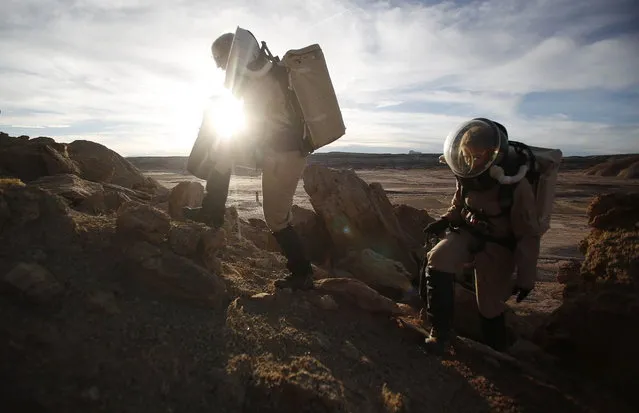
Melissa Battler (L), a geologist and commander of the Crew 125 EuroMoonMars B mission, and Csilla Orgel, a geologist, climb a rock formation to collect geologic samples for study at the Mars Desert Research Station (MDRS) in the Utah desert March 2, 2013. The MDRS aims to investigate the feasibility of a human exploration of Mars and uses the Utah desert's Mars-like terrain to simulate working conditions on the red planet. Scientists, students and enthusiasts work together developing field tactics and studying the terrain. All outdoor exploration is done wearing simulated spacesuits and carrying air supply packs and crews live together in a small communication base with limited amounts of electricity, food, oxygen and water. Everything needed to survive must be produced, fixed and replaced on site. (Photo by Jim Urquhart/Reuters)
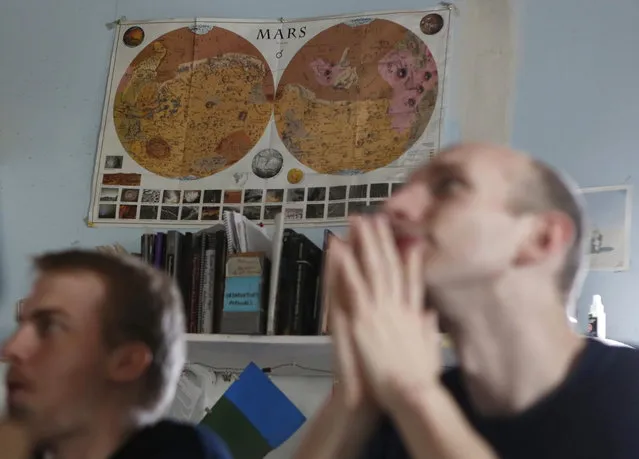
A vintage map of Mars hangs on the wall at the Mars Desert Research Station (MDRS) outside Hanksville in the Utah desert March 2, 2013. (Photo by Jim Urquhart/Reuters)
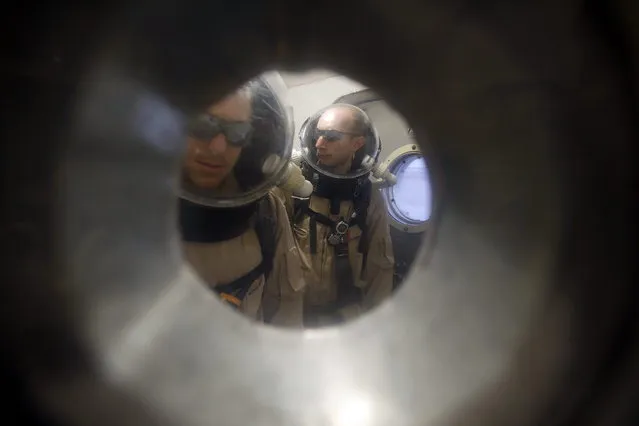
Volker Maiwald (L), executive officer and habitat engineer, and Hans van Ot Woud, mapping researcher and health and safety officer of Crew 125 EuroMoonMars B mission of the Mars Desert Research Station (MDRS), wait in an airlock in their simulated spacesuits before venturing out to collect geologic samples in the Utah desert March 3, 2013. (Photo by Jim Urquhart/Reuters)
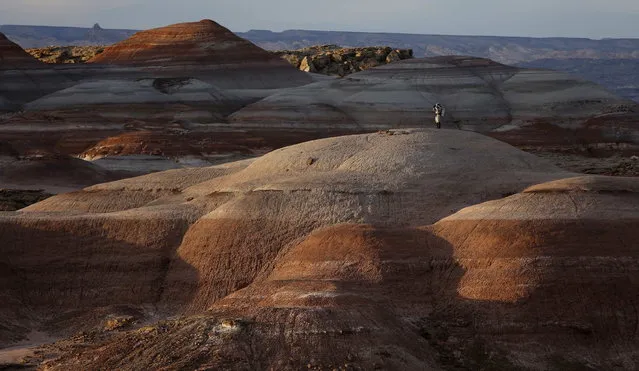
Volker Maiwald, executive officer and habitat engineer of Crew 125 EuroMoonMars B mission, walks among the rock formations while collecting geologic samples for study at the Mars Desert Research Station (MDRS) in the Utah desert March 2, 2013. (Photo by Jim Urquhart/Reuters)
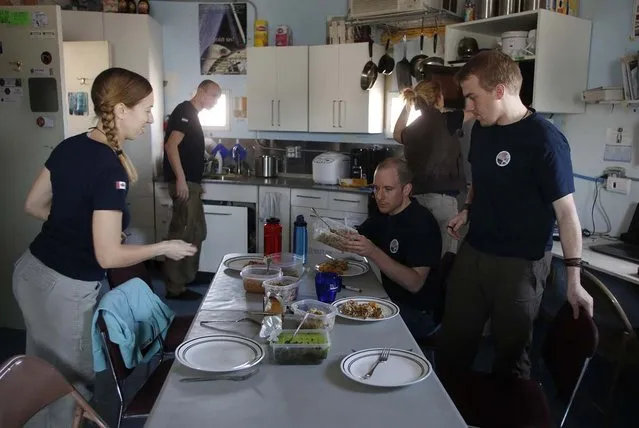
Members of Crew 125 EuroMoonMars B mission prepare a meal at the Mars Desert Research Station (MDRS) outside Hanksville in the Utah desert March 2, 2013. (Photo by Jim Urquhart/Reuters)
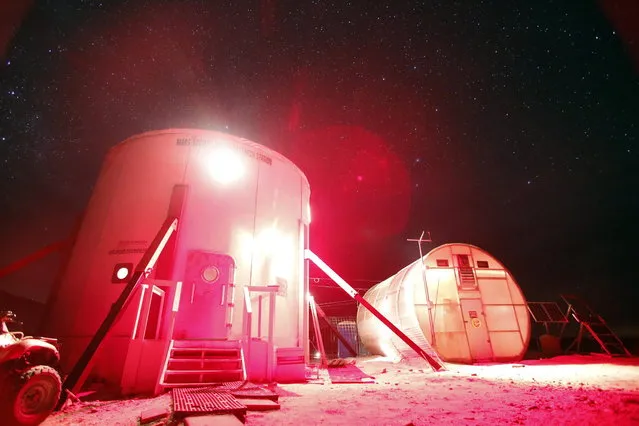
A view of the night sky above the Mars Desert Research Station (MDRS) is seen outside Hanksville in the Utah desert March 2, 2013. (Photo by Jim Urquhart/Reuters)
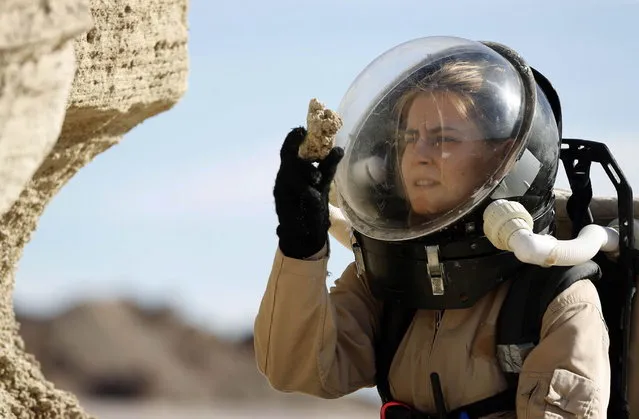
Csilla Orgel, a geologist with Crew 125 EuroMoonMars B mission, collects geologic samples for study at the Mars Desert Research Station (MDRS) outside Hanksville in the Utah desert March 2, 2013. (Photo by Jim Urquhart/Reuters)
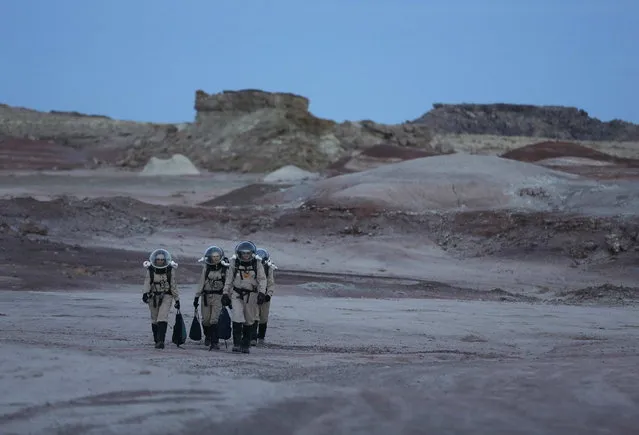
Members of Crew 125 EuroMoonMars B mission return after collecting geologic samples for study at the Mars Desert Research Station (MDRS) in the Utah desert March 2, 2013. (Photo by Jim Urquhart/Reuters)
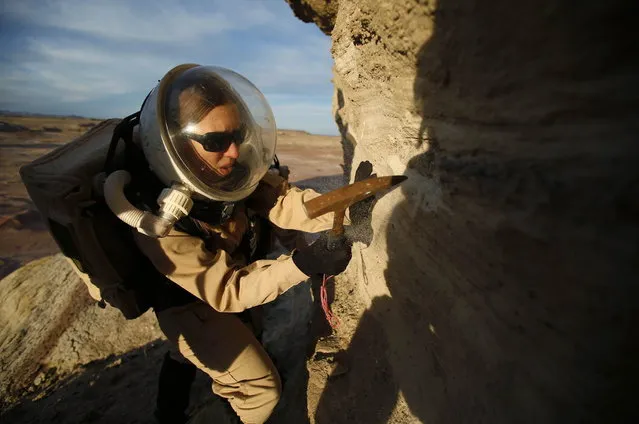
Melissa Battler, a geologist and commander of Crew 125 EuroMoonMars B mission, collects geologic samples for study at the Mars Desert Research Station (MDRS) in the Utah desert March 2, 2013. (Photo by Jim Urquhart/Reuters)
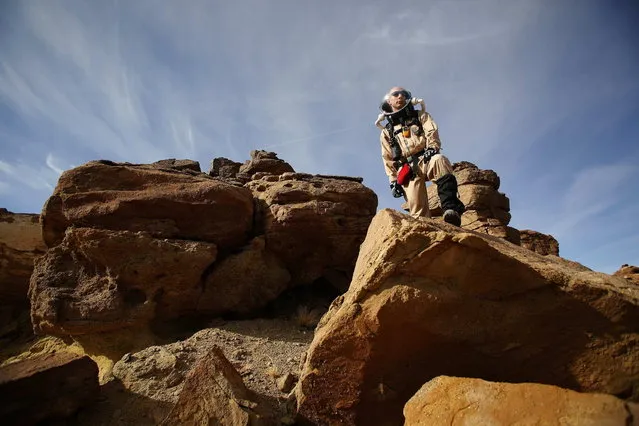
Hans van Ot Woud, a mapping researcher and the health and safety officer of Crew 125 EuroMoonMars B mission, collects geologic samples for study at the Mars Desert Research Station (MDRS) outside Hanksville in the Utah desert March 2, 2013. (Photo by Jim Urquhart/Reuters)
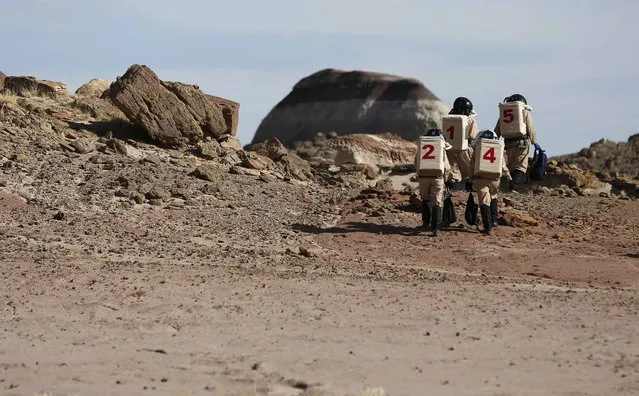
Members of Crew 125 EuroMoonMars B mission venture out in their simulated spacesuits to collect geologic samples for study at the Mars Desert Research Station (MDRS) in the Utah desert March 2, 2013. (Photo by Jim Urquhart/Reuters)
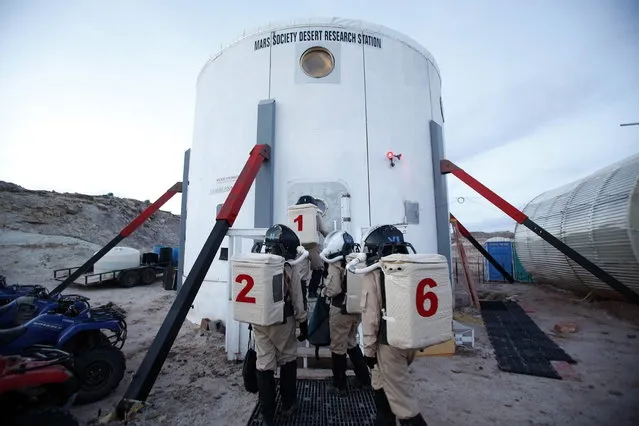
Members of Crew 125 EuroMoonMars B mission return after collecting geologic samples to be studied at the Mars Desert Research Station (MDRS) outside Hanksville in the Utah desert March 2, 2013. (Photo by Jim Urquhart/Reuters)

Members of Crew 125 EuroMoonMars B mission collect geologic samples for study at the Mars Desert Research Station (MDRS) in the Utah desert March 2, 2013. (Photo by Jim Urquhart/Reuters)

Csilla Orgel, a geologist of Crew 125 EuroMoonMars B mission, makes her way back to the Mars Desert Research Station (MDRS) in the Utah desert March 3, 2013. (Photo by Jim Urquhart/Reuters)
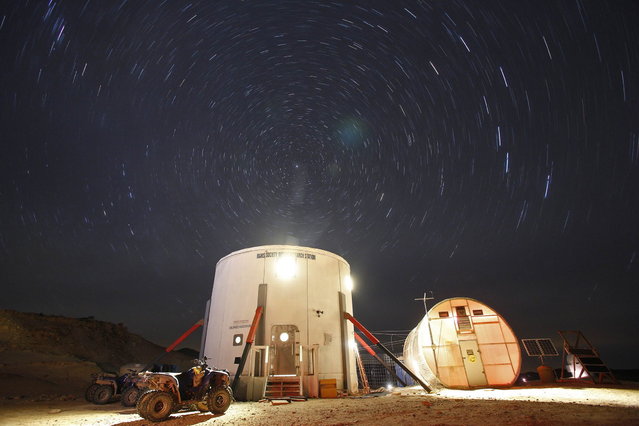
A view of the night sky above the Mars Desert Research Station (MDRS) is seen outside Hanksville in the Utah desert March 2, 2013. (Photo by Jim Urquhart/Reuters)
14 Mar 2013 12:11:00,
post received
0 comments
